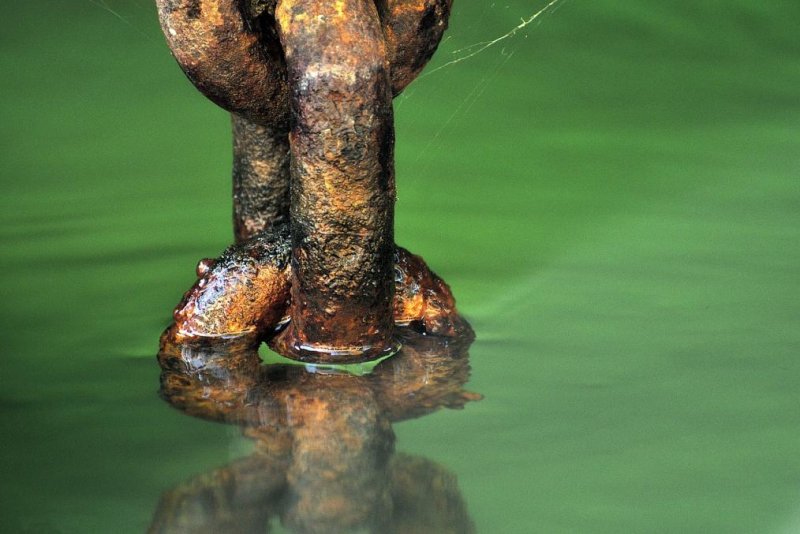Saltwater flowing across a thin layer of rust can produce an electric current. Photo by
Pixabay/CC
July 30 (UPI) -- Researchers have developed a new way to generate electricity by moving saltwater across thin films of iron oxide, or rust.
The discovery, detailed this week in the journal PNAS, could pave the way for new forms of sustainable power production.
It's not the first time saltwater and metal compounds have come together to produce electricity, but previous iterations have relied on chemical reactions -- the conversion of two or more chemicals into a new compound -- to produce power. Batteries offer the most obvious example of this formula.
The newest recipe for electricity is reaction-free. The kinetic energy of the flowing saltwater is converted into an electric current. The phenomenon, known as the electrokinetic effect, has been previously observed in atom-thick layers of of carbon arranged in a hexagonal lattice, also known as graphene.
"A similar effect has been seen in some other materials," Tom Miller, a professor of chemistry at the California Institute of Technology, said in a news release. "You can take a drop of saltwater and drag it across graphene and see some electricity generated."
Because graphene is difficult to synthesize at larger scales, Miller and his research partners decided to develop a film that was cheaper and easier to produce. The iron oxide films they produced in the lab are easier to make.
"It's basically just rust on iron, so it's pretty easy to make in large areas," Miller said. "This is a more robust implementation of the thing seen in graphene."
Rust grows naturally on iron alloys, but scientists needed to ensure the rust layers formed uniformly. Researchers deployed a technique called physical vapor deposition to turn iron oxide into a vapor that could be deposited as a thin layer on a substrate. The technique allowed scientists to deposit a layer of iron oxide measuring just 10 nanometers across, roughly 10,000 times thinner than a human hair.
When scientists released flowing saltwater across the film, they were able to produce several tens of millivolts and several microamps per square centimeter of surface area.
"For perspective, plates having an area of 10 square meters each would generate a few kilowatts per hour -- enough for a standard U.S. home," Miller said. "Of course, less demanding applications, including low-power devices in remote locations, are more promising in the near term."
Ions in the saltwater attract electrons in the iron beneath the rust layer. As the water moves along the surface, the electrons are pulled along for the ride, creating an electric current.
The technology could be used to produce energy in places where saline solutions are already in motion, like in the ocean or inside the human body.
"For example, tidal energy, or things bobbing in the ocean, like buoys, could be used for passive electrical energy conversion," he says. "You have saltwater flowing in your veins in periodic pulses. That could be used to generate electricity for powering implants."















